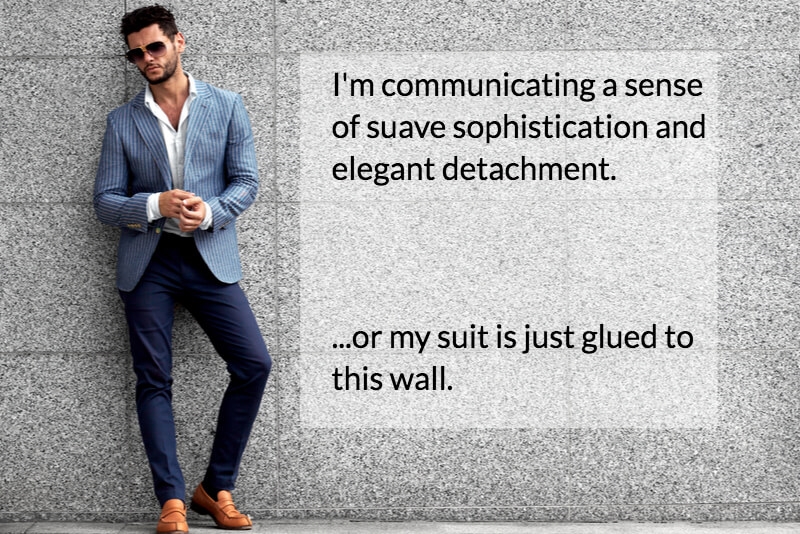When it comes to effective marketing, writing style matters — but many marketers ignore it. Columnist Mark Traphagen discusses how to cultivate a sense of style for your marketing.

I entered marketing as a career relatively late in life. While I rue not having discovered this wonderful world earlier, one of the things I don’t regret is how useful almost all my previous work experiences were to molding my success as a marketer. And of all those experiences, the most valuable has proven to be my years teaching English literature and composition to middle and high schoolers.
Why? Because at its most fundamental level, marketing is communication. Marketing is successful when a message is transmitted from a business to a consumer — and that message not only resonates with the consumer but moves her or him to action.
Many skills from the study of written composition contribute to effective message communication for marketing, but I think one of the most overlooked is writing style.
Keep up with all the developments in interactive marketing!
Why style?
If I just said the word “style” to you out of the context of this site or article, chances are the first association you would make is with “fashion.” Curiously enough, when I looked up the meaning of style on several fashion sites, one of the most common definitions was “a way of communicating.”
The clothes you wear and the way you wear something send a message to others, whether or not you are conscious of it. So I suppose that a person with style is one who consciously and intentionally cultivates a message about themselves through their clothing and accessories.

And so it is with written (or audio or video) communication. The style you use for your message is very much a part of the communication. It’s at least as important, and in some situations more so, than the content or ideas themselves.
For writing, stylistic choices affect several areas:
- Choice of vocabulary
- Reading level
- The author’s “voice”
- Level of formality
- The look of the text (for example, short vs. long paragraphs, inclusion of images)
The goal of using style effectively for marketing communications is to match your style to your intended audience, while at the same time avoiding inauthenticity.
Style and emotional impact
Experienced marketers have always understood intuitively that effective marketing appeals to more than the rational mind. Modern psychology and brain research have confirmed that emotions are much more responsible for most of our decisions than logical determinations.
While not a direct appeal to the emotional side of the brain, writing style does help make the subtle, subconscious connection that opens prospects up to the message. Sometimes, it’s just a matter of avoiding initial rejection. A speaker in a business suit is going to experience far less resistance from a corporate boardroom than someone in a clown suit.
Of course, clown-suit guy might be more successful communicating with a group of children (if he doesn’t scare them all away first!).

Marketing with style
My favorite guide to cultivating an effective writing style in the 21st century is “The Sense of Style” by cognitive scientist and author Steven Pinker. Pinker applies the latest research on linguistics, neuroscience and more to cut through the restrictive, pedantic, and too-often unjustified rules of past style guides to concentrate on what actually works.
But his approach is far from utilitarian. He believes that effective writing is enjoyable and inspiring.
Mere rules and usage restrictions ignore the fluidity of language. Humans and their cultures are constantly evolving, and their languages and idioms evolve concurrently. Pinker is more concerned about prose making a genuine connection with the reader rather than it being “correct.”
Why does writing style matter to marketing?
The right style earns trust. While few readers or listeners would articulate it, sloppy or inappropriate language is a primary reason for rejecting a message. Having the right style for your intended audience shows you respect and “get” them. It lowers their natural resistance barriers to marketing.
The right style crosses the writer-receiver divide. One of the fundamentals of communication theory is that there is always a transmitter and a receiver, but no communication takes place unless, in the end, the receiver has a similar conception in mind to what the transmitter intended to send. The wrong style introduces static into the transmission that can cause the message to be decoded incorrectly, or rejected altogether.
The right style adds beauty to the world. That seems like an odd goal for a marketing message. But think about why art has such appeal. A great piece of art cuts through the ordinariness of life and makes us take notice. Even better, it causes us to think differently about the world. In a very real sense, the goal of a marketer is to “change the world” of the prospects, to open them to considering an approach, solution, convenience or tool that would make their life different and to envision the better world that will result.
Style is where marketing science meets marketing as an art, and it creates the magic that leads to sales.
Cultivating a sense of style for your marketing
Pinker’s book helps the reader cultivate effective style. Here’s how some of his points apply to our marketing writing:
• Start by being a good reader. Pinker believes that the best writers are not only avid readers — they are engaged readers. That is, they’ve learned to pay attention to what works in the writing of others they admire. While reading and enjoying their writing, they have one eye peering behind the curtain to observe how they do what they’re doing.
Marketers should be constantly analyzing the marketing messages that most appeal to them, noting how the use of language, tone, humor and so on make the message click.
• Envision the world you want to create. Keep in mind what I said above: Effective communication happens when the message receiver enters to some extent into the world of the message transmitter, or at least the world he or she wants to conjure up.
The unending fascination of millions of readers and viewers with “The Lord of the Rings” or “Game of Thrones” has much to do with J.R.R. Tolkien’s and George R.R. Martin’s ability to draw them into a world that previously only existed in the author’s mind. As a marketer, seek in your writing to create a world that your prospects will want to inhabit and see themselves living in.
• Beware of the curse of knowledge. The “curse of knowledge” is the failure to understand what it is like for someone to not know what you know. In other words, when you know something deeply and passionately (your products or services, for example, and how they meet needs and solve problems), it’s easy to assume that everyone else already feels the way you do and will automatically see their need for what you’re selling. They don’t, and they won’t.
You have to cultivate the ability to see things from the perspective of someone who (so far) couldn’t care less about what you’re offering, and shape your messages to bridge that gap, to help your prospects walk along the same path that brought you to your present passions.
• Build arcs of coherence. Don’t get so bogged down in the individual details of your message that you fail to connect the dots for your readers. Always remember that no one has to read your marketing message.
Outline the details you want to get across, and then plan how they connect together to draw the reader on and keep her or him engaged. Think in terms of a drama, and make sure all your players and their action work together toward the goal of where you want your prospect to end up.
One of the primary challenges of our profession is also one of its deepest joys and most tangible rewards. That challenge is getting past the natural resistance and short attention span of your marketing prospects so that they are drawn into the world you want them to inhabit, the world in which they see their lives as better, fun or more productive because they have whatever you’re trying to sell.
I say that challenge is also the greatest joy and reward for a marketing writer because unlike other writers, we get very quick feedback on the effectiveness of our messages. A novelist may spend years writing, then more years waiting for edits, publication and promotion. We marketers know very quickly what works and what doesn’t for our target markets, and we can adjust on the fly to be more effective.
Think about the style you incorporate into your marketing writing and what you can do better to build that bridge to your readers that turns them into customers.
Opinions expressed in this article are those of the guest author and not necessarily Marketing Land. Staff authors are listed here.
Marketing Land – Internet Marketing News, Strategies & Tips
(43)








